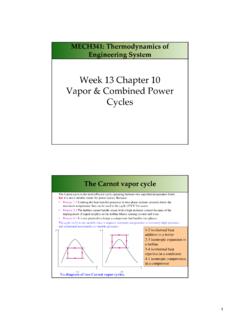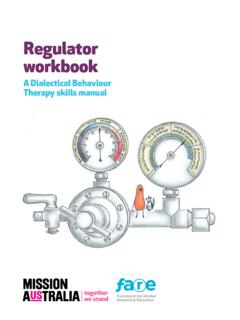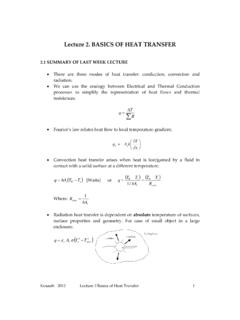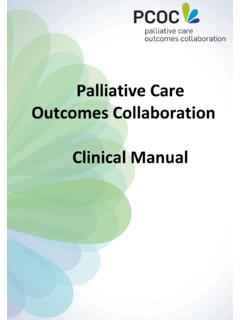Transcription of CHEMICAL SPILL MANAGEMENT GUIDELINES
1 WHS UNIT CHEMICAL SPILL MANAGEMENT GUIDELINES 2015 December Page 1 of 7 Hardcopies of this document are considered uncontrolled. Please refer to UOW website or intranet for latest version. CHEMICAL SPILL MANAGEMENT GUIDELINES Contents 1 Purpose .. 2 2 Scope .. 2 3 Definitions .. 2 4 Roles and Responsibilities .. 2 5 General .. 2 6 Defining Major or Minor 3 7 Major SPILL Response .. 4 8 Minor SPILL Response .. 4 9 Generic CHEMICAL SPILL Response .. 5 High and Extreme Risk Chemicals .. 5 10 Laboratory SPILL Kits .. 6 11 CHEMICAL Transport and Secondary 6 12 Storage and Secondary Containment .. 6 13 Decontamination and Disposal .. 6 14 Incident Reporting .. 7 15 Related Documents and References .. 7 16 Version Control Table .. 7 CHEMICAL SPILL MANAGEMENT GUIDELINES CHEMICAL SPILL MANAGEMENT GUIDELINES 2015 December Page 2 of 7 Hardcopies of this document are considered uncontrolled. Please refer to UOW website or intranet for latest version.
2 1 Purpose This document outlines procedures for the MANAGEMENT of laboratory CHEMICAL spills that may occur on campus, to minimise the effects on health and safety from exposure to CHEMICAL spills and reduce the impact on the environment. 2 Scope These GUIDELINES apply to all workers and others who use, transport and store chemicals in laboratories at the University of Wollongong. 3 Definitions Bund A bund is a small wall or barrier that restricts the flow of substances and contains them in a particular area. SDS Safety Data Sheets (formerly known as Material Safety Data Sheet MSDS) provide workers with information such as physical data (melting point, boiling point, flash point, etc.), toxicity, health effects, first aid, reactivity, storage, disposal, protective equipment, and SPILL -handling procedures. 4 Roles and Responsibilities Heads of School, Managers and Laboratory Supervisors are responsible for ensuring that: this procedure is implemented within their area of responsibility CHEMICAL SPILL kits and appropriate PPE are maintained, clearly labelled and checked during the workplace inspection process risk assessments and safety data sheets (SDS) are available which detail action to be taken in the event of a CHEMICAL SPILL all staff receive appropriate training to deal with CHEMICAL spills all staff are aware of the legal obligations and UOW standards regarding environmental pollution from CHEMICAL spills all major CHEMICAL SPILL incidents are reported through SafetyNet.
3 Staff and students are responsible for ensuring that they: do not place themselves or others at risk of injury keep clear of a SPILL when alerted to an incident clean up a CHEMICAL SPILL immediately and/or report the SPILL to their supervisor know where safety data sheets are kept, or how they can be accessed follow specific written procedures provided for SPILL control. 5 General A worker handling a hazardous CHEMICAL should be aware of the correct procedures in the event of a SPILL . This information can be sourced through a SDS and if necessary explicitly detailed in a documented safe work procedure. Controls, such as double containment, bunding , drip trays or raised edges around work areas, must be in place to minimise the effects of a CHEMICAL SPILL . SPILL MANAGEMENT and response strategies should be included during laboratory emergency planning with personnel trained in the procedures.
4 A quick response by laboratory personnel to a CHEMICAL SPILL is likely to limit the consequences, whether it is a minor or major SPILL . CHEMICAL SPILL MANAGEMENT GUIDELINES CHEMICAL SPILL MANAGEMENT GUIDELINES 2015 December Page 3 of 7 Hardcopies of this document are considered uncontrolled. Please refer to UOW website or intranet for latest version. All laboratory workers should wear appropriate personal protective clothing and equipment (PPCE) when attending to a CHEMICAL SPILL , for example, lab coats, gloves, safety glasses, goggles, face shields and/or respirator as appropriate to the risk. When preparing an emergency procedure for use of a hazardous substance you should consider the immediate danger to persons and ensure effective containment and clean up, appropriate disposal of waste material and notification to all relevant authorities. 6 Defining Major or Minor SPILL CHEMICAL SPILL MANAGEMENT GUIDELINES CHEMICAL SPILL MANAGEMENT GUIDELINES 2015 December Page 4 of 7 Hardcopies of this document are considered uncontrolled.
5 Please refer to UOW website or intranet for latest version. Spills will be either: minor or major, depending on the volume, location and hazard of the substance spilt. If any of the following apply, the SPILL is considered major. 1. Quantity As a guide, if more than 100 ml/10 grams of highly hazardous CHEMICAL (carcinogen) or 1 litre/100 grams of a volatile or flammable solvent, reactive or corrosive (acid or base) liquid/solid. For some substances, for example mercury or 40% HF evacuation should be consider at < 100mL. 2. Hazard - If the CHEMICAL presents an immediate threat to human health or safety or the environment; is unknown, or is an immediate fire hazard such as an uncontrolled gas leak. 3. Location If the CHEMICAL is outside of the laboratory or outside of the area where the material is normally used, and/or there is no trained person available to clean up the SPILL .
6 A major CHEMICAL SPILL will usually result in the immediate evacuation of the area, if not the entire building. For example: the uncontrolled release of ammonia from a gas cylinder in an unventilated enclosed area. The volume is large and may represent a high risk to persons in the area. A minor CHEMICAL SPILL is one that the individual can clean up. For example: 5ml of concentrated Sulphuric Acid in a fume cupboard. Although the risk from concentrated acid is high it is only a small volume that can easily be neutralised and removed. 7 Major SPILL Response Protect yourself. Don t touch harmful substances. Be aware that fumes may pose a risk. Evacuate the laboratory. If possible, as you leave, close doors to prevent further contamination and turn off any ignition sources. Isolate and control access to the SPILL area. Do not allow non-essential personnel to enter the SPILL area.
7 Raise the alarm. Contact the Laboratory Manager or School Safety Coordinator, supervisor or nearest building warden. Advise security (ext 4900) to notify Emergency Services if necessary. Provide the following information: - Name and telephone number of caller - Building and room number where the incident occurred - Name and type of material - Known hazard of the materials - Amount of material spilled - Explanation of what happened - Condition of any injured personnel - Status of area Apply first Aid. If necessary source the SDS for the CHEMICAL and treat contaminated individuals as per the SDS. If required, summon a UOW First Aid Officer, or ambulance. Isolate affected persons and keep on site. Decontaminate. In conjunction with expert assistance, minimise the spread of contamination and commence clean up procedures.
8 Review. Once the clean-up is complete, review the area. 8 Minor SPILL Response Ensure you are wearing correct PPCE to respond to the SPILL . Chemically resistant safety gloves; goggles; enclosed footwear( a pair of gum boots) Cotton laboratory coat Full or Half face respirator (depending on type and extent of SPILL ) with filters appropriate for the spilt CHEMICAL Always check the SDS for specific PPCE requirements CHEMICAL SPILL MANAGEMENT GUIDELINES CHEMICAL SPILL MANAGEMENT GUIDELINES 2015 December Page 5 of 7 Hardcopies of this document are considered uncontrolled. Please refer to UOW website or intranet for latest version. Immediately notify others in the area of the SPILL . Corridors and pathways have a lot of traffic so it is important to alert passers-by of the SPILL and ensure the area is kept free of traffic. Identify the CHEMICAL /s and hazards involved (SDS, label) and use the information on the physical and CHEMICAL properties of the material to judge response.
9 If there is CHEMICAL exposure to a worker, respond as quickly as possible to administer appropriate first aid. Approach with care - many harmful chemicals lack colour or offensive odours. Avoid breathing vapours from the SPILL . Never assume the CHEMICAL is harmless. Control the source. Contain the SPILL with a barrier (damming) or use appropriate absorbent material from the spills kit. Clean up promptly and thoroughly and neutralise any acids / alkalis. Decontaminate the affected area, equipment and clothing and dispose of any contaminated material appropriately. Review area when decontamination is complete. Check walkways, floors, stairs, and equipment for contamination or damage. 9 Generic CHEMICAL SPILL Response Substance Recommended Action Organic Chemicals Use an absorbent such as vermiculate Place spent vermiculite in a sealed labelled container for waste disposal by a licensed contractor Flammable solvents can be cleaned up with absorbent rags and then placed in fully open headed drums that are sealed, suitably labelled.
10 Oxidising acids WARNING. DO NOT USE PAPER TOWELS OR SAWDUST TO CLEAN OXIDISING ACID SPILLS The safety data sheet must always be consulted when dealing with these types of spills. In particular the hazards of the CHEMICAL (including acute and chronic health effects), reactivity information, safety precautions for handling and specific information for dealing with spills. Acids For small spillages of acids use dry sand or carbonate to contain SPILL . The area should be flushed with water but not to the extent that the spillage is spread unnecessarily. Neutralise an acid with sodium bicarbonate by sprinkling generously over SPILL . Laboratory SPILL Kits should contain soda ash (sodium bicarbonate) to sprinkle liberally over the SPILL . If necessary wear a P1 mask to avoid breathing soda ash dust. Alkalis Contain the alkali SPILL using dry sand or neutraliser.









